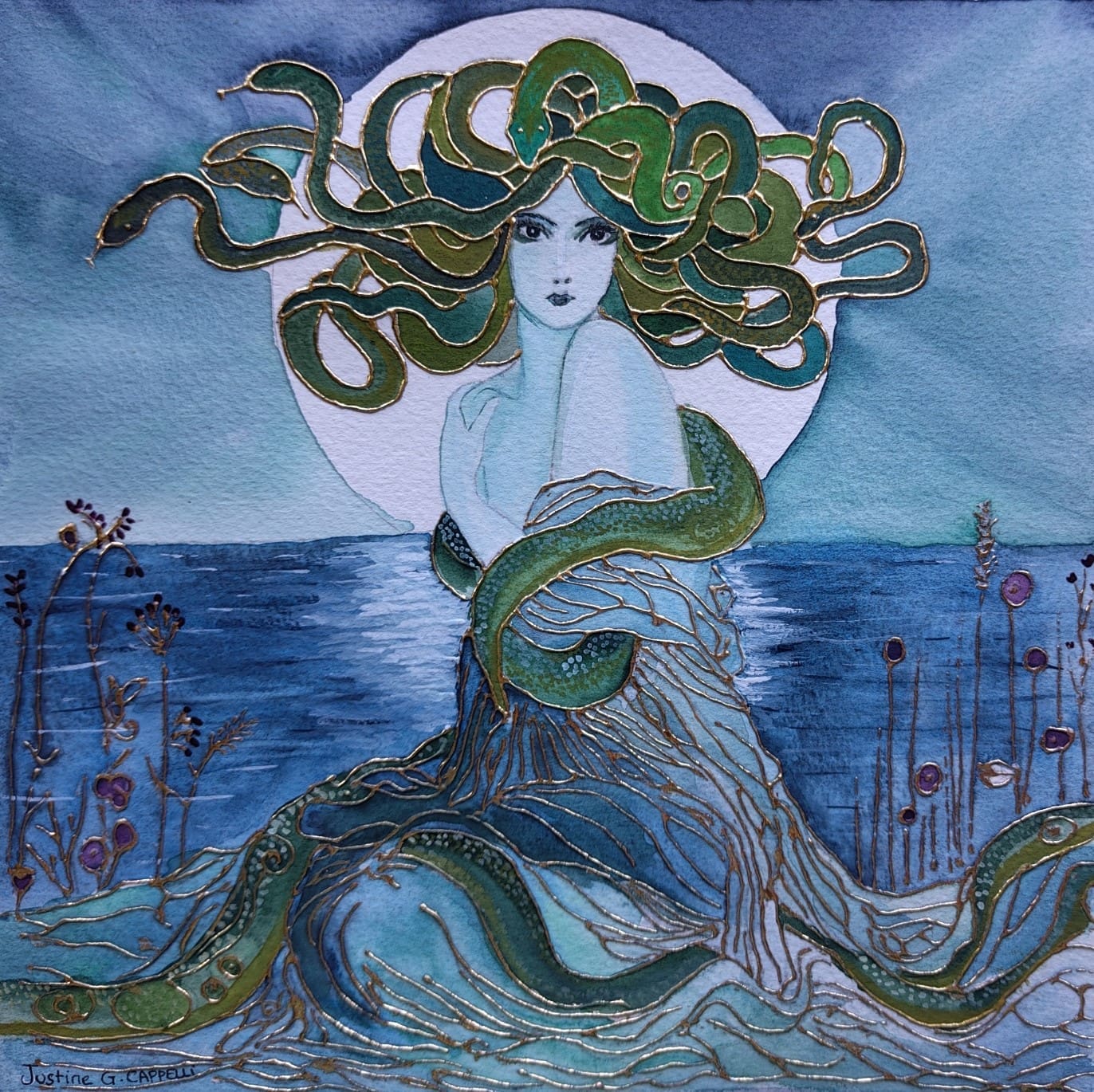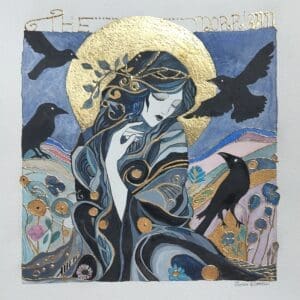Description
✨ Medusa ✨
This 20x20cm (8×8 inches) watercolor and gold leaf piece, hand-painted on 100% cotton paper, portrays Medusa, the ancient Greek figure often misunderstood in mythology and revered today as a feminist icon.
Mythological Background
Medusa is one of the Gorgons in Greek mythology, the only mortal among her sisters. Early myths describe her as a beautiful woman, transformed into a monster with serpentine hair by the goddess Athena, after Poseidon assaulted her in Athena’s temple. As a result, Medusa became a symbol of both punishment and power, with the ability to turn anyone who gazed upon her to stone. Some versions of her story suggest that her transformation was not purely punitive but a means to protect herself after her trauma. (Sources: Bullfinch’s Mythology; Pseudo-Apollodorus, Bibliotheca; Hesiod, Theogony).
Medusa in Contemporary Magic
Medusa has evolved into a figure of protection in modern witchcraft. Practitioners of contemporary magic may invoke her energy for strength, autonomy, and defense. She is often seen as a guardian against toxic influences and negative energy. As a talisman, images of Medusa are believed to ward off unwanted attention and harm, acting as both a shield and a weapon. (Source: Greenwood, S. The Encyclopedia of Magic & Alchemy. Llewellyn Publications, 2005).
Medusa as a Feminist Icon
Medusa’s modern reinterpretation as a feminist symbol challenges the patriarchal narratives of her myth. Her story represents the victimization of women, yet her transformation is also a statement of her resilience. Scholars like Helene Cixous, in her essay The Laugh of the Medusa (1975), argue that Medusa embodies the anger, strength, and voice of women repressed in male-dominated systems. Her gaze, once feared, has been reclaimed as a symbol of confronting injustice and asserting self-sovereignty. (Source: Cixous, Helene. The Laugh of the Medusa. Signs, 1975).
My View
This painting of Medusa was created with “harvest water,” collected from the autumnal life in my garden, capturing the essence of the season’s transition. Medusa in this piece bears the fruits of the oppressed people’s anger, embodying their struggles, hopes, and battles. The sea behind her mirrors this unrest, a reflection of the untamable forces she represents. She is not merely a symbol of resistance; she is the power that cannot be harnessed, a force that will inevitably be reckoned with by those who dismiss or mock it.




















